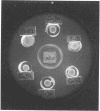Abstract
One hundred and forty-three strains of Corynebacterium acnes, isolated from human skin and acne lesions, were compared with three strains of Propionibacterium acnes from the American Type Culture Collection. The 146 organisms could be separated into two groups. Members of the larger group (129 strains) hydrolyzed gelatin and usually produced indole, Gel-In(+), but were unable to ferment trehalose, maltose, or sucrose, TMS(−). The deoxyribonucleic acid from selected strains of this group had an average guanosine + cytosine (GC) content of 60.5%. The members of the smaller group (17) were Gel-In(−), TMS(+), and the deoxyribonucleic acid had an average GC content of 63.9%. Studies with absorbed and unabsorbed antisera to the smaller group showed that although there were antigens shared by the two groups, it was possible to distinguish them serologically. Members of each group produced propionic acid. The principal fatty acid component of members of each group was iso-C15 fatty acid. Seventy per cent of the Gel-In(+) strains were lysed by phage 174, whereas only one of 15 Gel-In(−) strains was lysed. Pending further information on the genetics of the two groups, those Gel-In(−), TMS(+) strains are tentatively designated C. acnes, group II.
Full text
PDF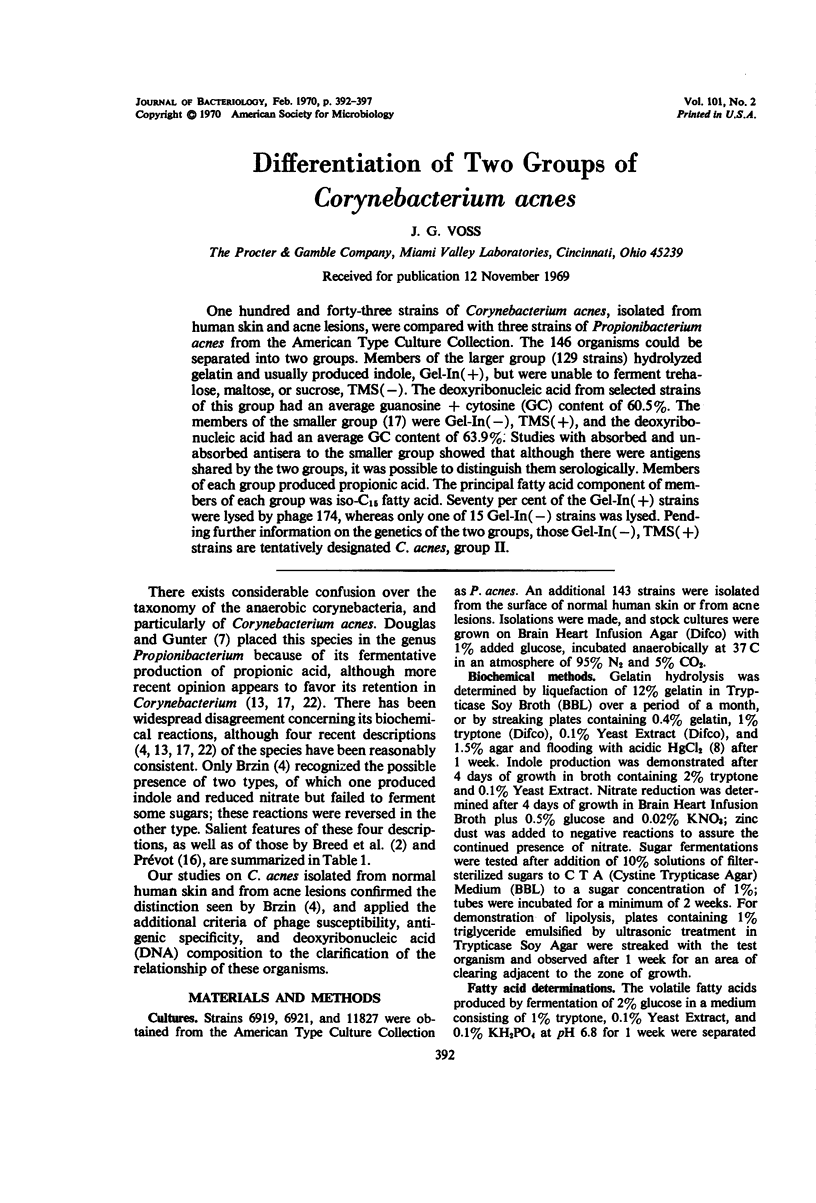
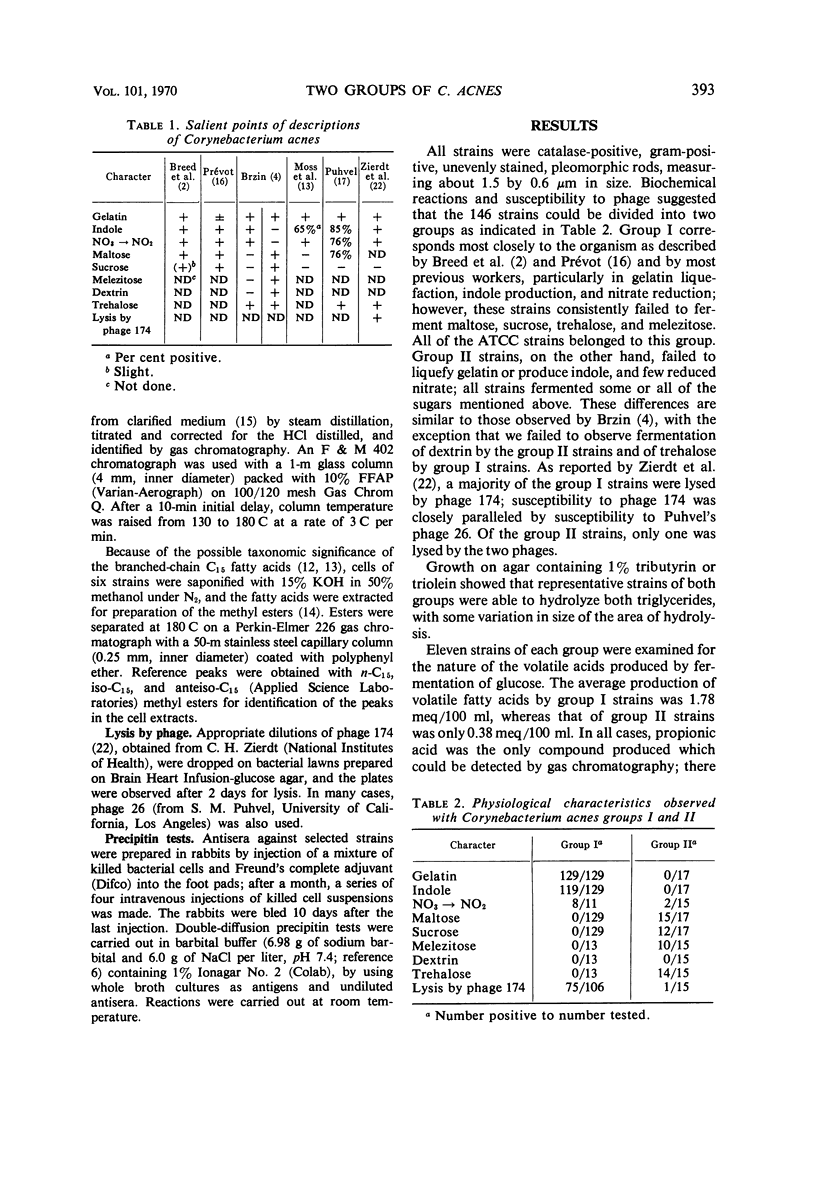

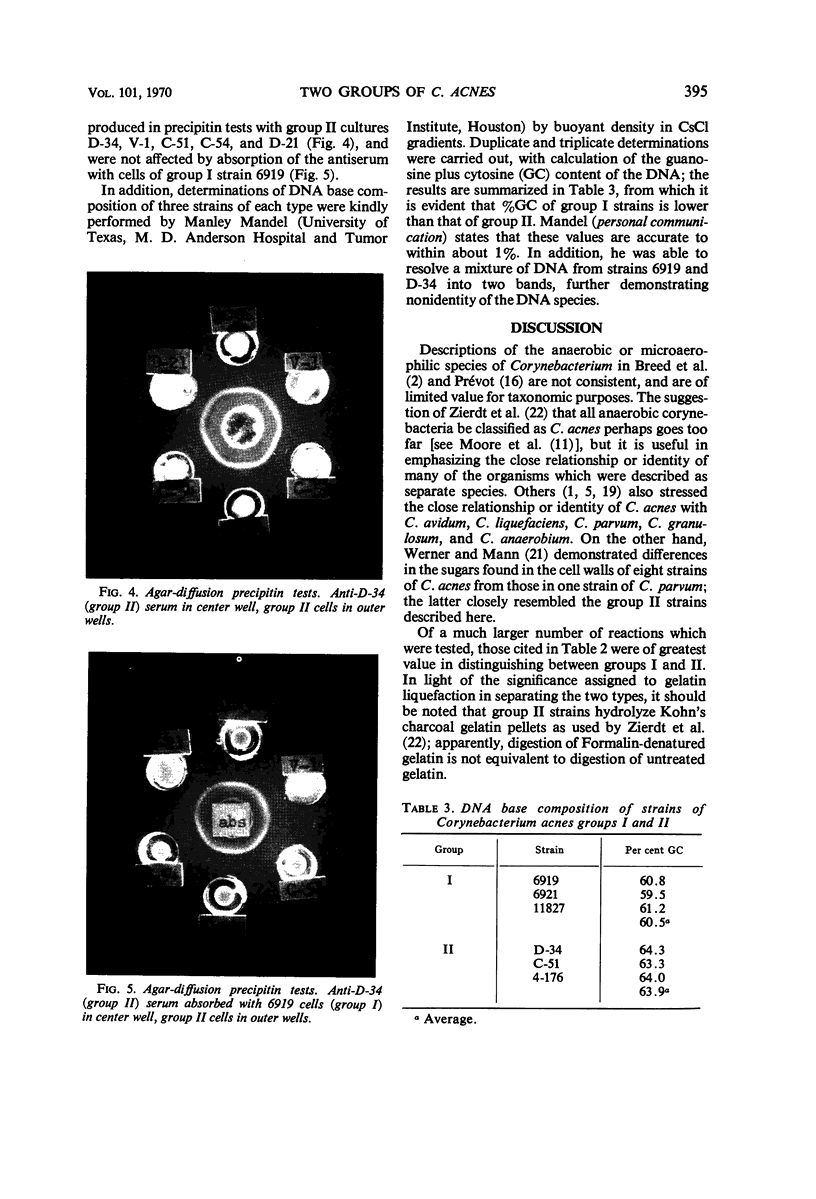
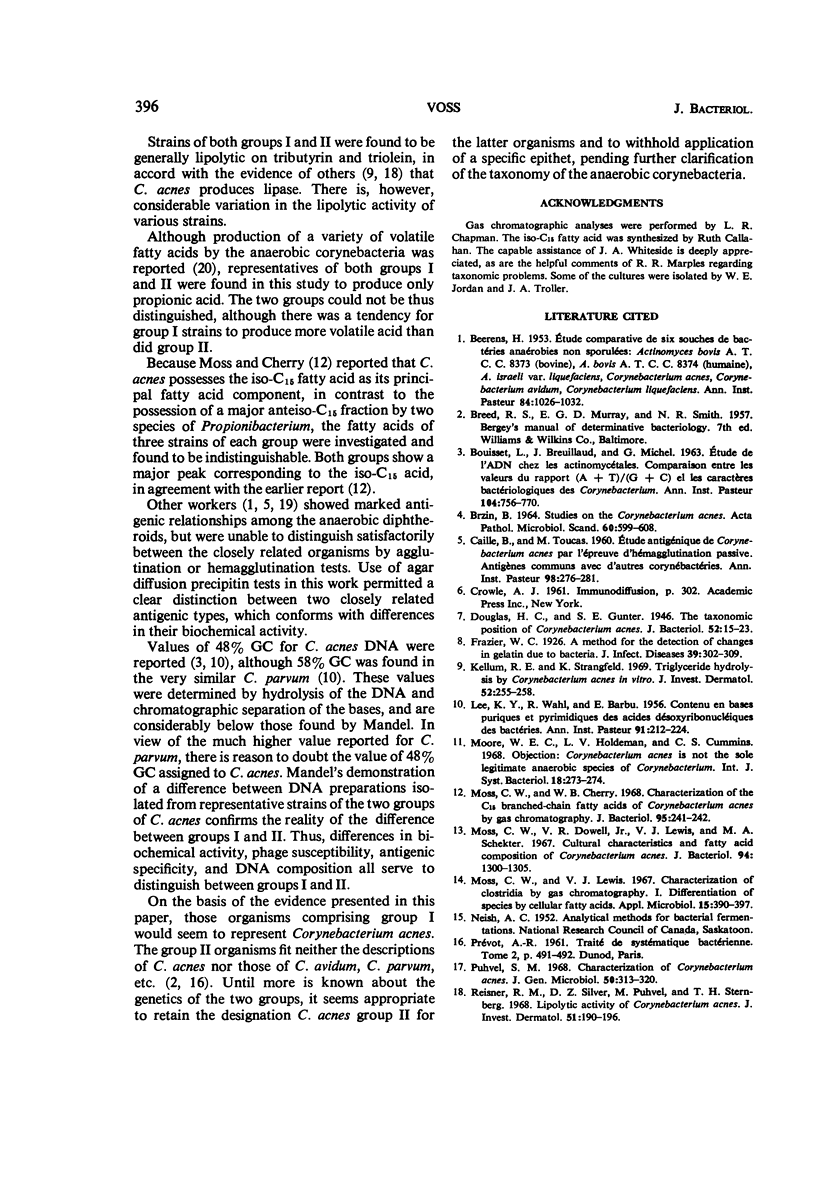

Images in this article
Selected References
These references are in PubMed. This may not be the complete list of references from this article.
- BARBU E., LEE K. Y., WAHL R. Contenu en bases puriques et pyrimidiques des acides désoxyribonucléiques des bactéries. Ann Inst Pasteur (Paris) 1956 Aug;91(2):212–224. [PubMed] [Google Scholar]
- BEERENS H. Etude comparative de six souches de bactéries anaérobies non sporulées: Actinomyces bovis A.T.C.C 8373 (bovine), A. bovis A.T.C.C. 8374 (humaine), A. israeli var. liquefaciens, Corynebacterium acnes, Corynebacterium avidum, Corynebacterium liquefaciens. Ann Inst Pasteur (Paris) 1953 Jun;84(6):1026–1032. [PubMed] [Google Scholar]
- BOUISSET L., BREUILLAUD J., MICHEL G. [Study of DNA in Actinomycetales. Comparison between the values of the A&T/G&C relationship and the bacteriological propof Corynebacterium]. Ann Inst Pasteur (Paris) 1963 Jun;104:756–770. [PubMed] [Google Scholar]
- BRZIN B. STUDIES ON THE CORYNEBACTERIUM ACNES. Acta Pathol Microbiol Scand. 1964;60:599–608. doi: 10.1111/apm.1964.60.4.599. [DOI] [PubMed] [Google Scholar]
- CAILLE B., TOUCAS M. [Antigenic study of Corynebacterium acnes by the passive hemagglutination test. Antigens in common with other Corynebacteria]. Ann Inst Pasteur (Paris) 1960 Feb;98:276–281. [PubMed] [Google Scholar]
- Douglas H. C., Gunter S. E. The Taxonomic Position of Corynebacterium acnes. J Bacteriol. 1946 Jul;52(1):15–23. [PMC free article] [PubMed] [Google Scholar]
- Kellum R. E., Strangfeld K. Triglyceride hydrolysis by Corynebacterium acnes in vitro. J Invest Dermatol. 1969 Mar;52(3):255–258. [PubMed] [Google Scholar]
- Moss C. W., Cherry W. B. Characterization of the C15 branched-chain fatty acids of Corynebacterium acnes by gas chromatography. J Bacteriol. 1968 Jan;95(1):241–242. doi: 10.1128/jb.95.1.241-242.1968. [DOI] [PMC free article] [PubMed] [Google Scholar]
- Moss C. W., Dowell V. R., Jr, Lewis V. J., Schekter M. A. Cultural characteristics and fatty acid composition of Corynebacterium acnes. J Bacteriol. 1967 Nov;94(5):1300–1305. doi: 10.1128/jb.94.5.1300-1305.1967. [DOI] [PMC free article] [PubMed] [Google Scholar]
- Moss C. W., Lewis V. J. Characterization of clostridia by gas chromatography. I. Differentiation of species by cellular fatty acids. Appl Microbiol. 1967 Mar;15(2):390–397. doi: 10.1128/am.15.2.390-397.1967. [DOI] [PMC free article] [PubMed] [Google Scholar]
- Puhvel S. M. Characterization of Corynebacterium acnes. J Gen Microbiol. 1968 Feb;50(2):313–320. doi: 10.1099/00221287-50-2-313. [DOI] [PubMed] [Google Scholar]
- Reisner R. M., Silver D. Z., Puhvel M., Sternberg T. H. Lipolytic activity of Corynebacterium acnes. J Invest Dermatol. 1968 Sep;51(3):190–196. [PubMed] [Google Scholar]
- SEELIGER H. Ein Beitrag zur Bakteriologie anaerober Corynebakterien und deren Vorkommen in pathologischem Material. Arch Hyg Bakteriol. 1953;137(1):1–10. [PubMed] [Google Scholar]
- STRAPATSAKI-COCOVINI Z. Etude du type fermentaire des Corynebacterium anaérobies par chromatographie sur papier. Ann Inst Pasteur (Paris) 1957 Nov;93(5):647–655. [PubMed] [Google Scholar]
- Werner H., Mann S. Chemische Analyse der Zellwand von Corynebacterium acnes und C. parvum. Zentralbl Bakteriol Orig. 1968 May;206(4):486–499. [PubMed] [Google Scholar]






